Why athletes need a ‘quiet eye’
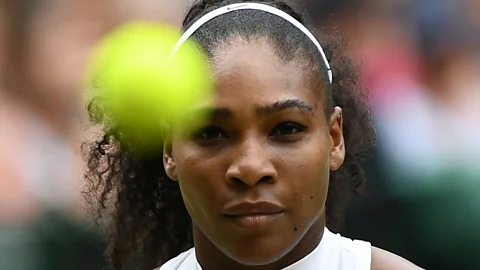 Getty
GettyWant to know who will win a World Cup game or Wimbledon match? Look closely at the athletes’ eyes — including when it seems they're about to lose.
BBC Future has brought you in-depth and rigorous stories to help you navigate the current pandemic, but we know that’s not all you want to read. So now we’re dedicating a series to help you escape. We’ll be revisiting our most popular features from the last three years in our Lockdown Longreads.
You’ll find everything from the story about the world’s greatest space mission to the truth about whether our cats really love us, the epic hunt to bring illegal fishermen to justice and the small team which brings long-buried World War Two tanks back to life. What you won’t find is any reference to, well, you-know-what. Enjoy.
If anyone knows how to grab a victory from the jaws of defeat, it’s Serena Williams. Just consider her semi-final against Kim Clijsters at the 2003 Australian Open. At 5-2 down in the final set, she was within a hair’s breadth of losing her place in the tournament. But rather than slipping into despair, she saved two match points before winning the next five games. Somehow, each serve and each return landed just where she wanted them to – and she would ultimately go on to win the whole tournament.
A single such feat would be an exceptional occurrence in any career, but Williams has since made similarly breath-taking comebacks at the Australian Open in 2005, at Wimbledon in 2009, and at the China Open in 2014, managing to pull back even when her opponents are serving a match point. In each case, the extreme pressure, rather than causing her to crumble, only seemed to sharpen her concentration.
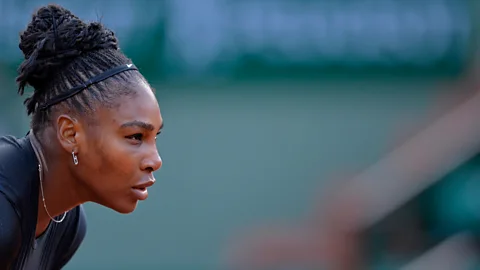 Glyn Kirk/AFP/Getty Images
Glyn Kirk/AFP/Getty ImagesPsychologists and neuroscientists have now identified some of the common mental processes that mark out elite athletes such as Williams. And one of the most intriguing aspects appears to be a phenomenon known as the “quiet eye” – a kind of enhanced visual perception that allows the athlete to eliminate any distractions as they plan their next move. Intriguingly, quiet eye appears to be particularly important at times of stress, preventing the athlete from ‘choking’ at moments of high pressure. It may even lead to the mysterious ‘flow state’.
It’s not just budding sportsmen and sportswomen who should take note. The same laser-sharp focus can help doctors maintain their focus as they perform keyhole surgery, and it is of increasing interest to the military.
“There is a small window of opportunity for the motor system to receive information from the eyes,” explains Sam Vine at the University of Exeter. “And experts have found a better way to optimise that window and to keep that window [open], which helps their movements to be really accurate and really precise.”
Unexplored territories
The concept of quiet eye originates with the personal experiences of a kinesiologist called Joan Vickers. As a student in sports science – and a keen athlete herself – Vickers always had been interested in how our athletic talents vary so much from day to day.
While playing on the university basketball team, for instance, she once scored an extraordinary 27 points within the first half of a match. Another time, she had a stunning winning streak while serving for the university volleyball team. But both miraculous performances were one-offs – each time, her magic touch disappeared the next day.
“It kept on running around my head – how could I have done that? Physically I didn’t change,” she says. On the other hand, why were the elite athletes she envied not only so good, but also so consistent?
Embarking on a PhD at the University of British Columbia, Vickers began to suspect the secret lay in the way that elite athletes see the world. She hooked a group of professional golfers up to a device that precisely monitored their eye movements as they putted their balls. She found an intriguing correlation: the better the player (as measured by their golfing handicap) the longer and steadier their gaze on the ball just before, and then during, their strike. Novices, by contrast, tended to shift their focus between different areas of the scene, with each fixation lasting for shorter periods of time.
To see this process in action, watch the following video (courtesy of the University of Exeter’s Sam Vine). You will see how the golfer’s gaze is jumpy to start with, before fixating on one side of the ball as they take their putt.
The general idea that you should ‘keep your eye on the ball’ is well-known, of course – but this suggested something more intricate, with the precise onset and duration of the gaze correlating with an objective measure of sporting success.
The finding was also at odds with the equally prevalent assumption that expertise comes from more rapid mental processing. According Vickers’ results, the expert athlete actually slowed down their thinking at the crucial moment.
“I knew I was seeing something that no one had ever seen before,” says Vickers, now a professor at the University of Calgary. “I felt like Columbus or the Vikings.”
The quiet eye has since been observed in many other sports, including basketball, volleyball, football, tennis, archery, and ice hockey. Needless to say, the exact location of the gaze depends on the task in question. During a free throw in basketball, for instance, the gaze needs to land on the front of the hoop’s rim; for a football penalty kick, it should be on the top left or right corner of the net; and for an ice hockey goalkeeper, their gaze lingers on the puck just before their opponent released it from the stick. In each case, a steadier final fixation, just before the critical moment, marks out the expert athlete, who hold their gaze for 62% longer than novices.
Crucially, the differences in this dwell time of the quiet eye don’t just predict the overall differences between elite and novice players; fluctuations in the onset and duration of the quiet eye can also explain lapses in the athlete’s individual performance, which would again reaffirm the idea that it is itself a critical part of the mental processes.
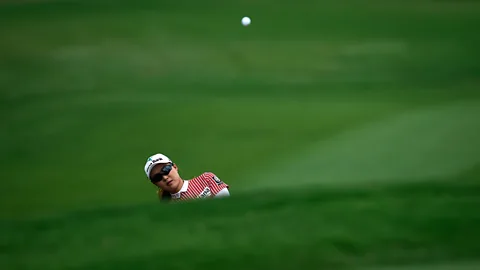 Getty Images
Getty ImagesCamilo Sáenz-Moncaleano, who recently examined the quiet eye in tennis players, suspects that most athletes had not made a conscious decision to change their eye movements; for many it’s probably a behaviour that they picked up implicitly. “They won’t know the name of the term, but they know how to do it,” he says. “It’s a natural thing.”
Budding athletes will be heartened to hear that the quiet eye can be taught, however. In one of the first tests of quiet eye training, Vickers took a university basketball team and hooked them up to her eye-tracking devices so that they could become more aware of their gaze as they practiced ‘free throws’.
As she had hoped, their performance improved – by 22% – over the next two seasons, compared to an 8% improvement in a control group. By the end of the second season, the team had reached a level of accuracy that was even higher than the NBA average.
Psychology is, of course, replete with apparently promising interventions that have subsequently failed to replicate. But this was not just a one-off result: quiet eye training has since helped many other amateur and professional athletes – including national volleyball teams and Olympic skeet shooters – to achieve their potential.
A recent meta-analysis confirms that the quiet eye is a strong and highly consistent effect. In 2017, the European Journal of Sport Science devoted a whole issue to exploring the phenomenon.
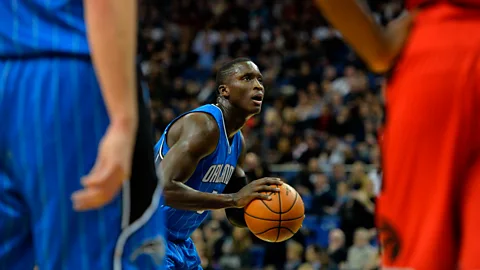 Glyn Kirk/AFP/Getty Images
Glyn Kirk/AFP/Getty ImagesSurgical precision
Given these striking results, the scientists have now started considering applications beyond elite sports. A University of Exeter study, for instance, has found that quiet eye training can help children with coordination problems improve their physical abilities, contradicting a commonly held belief that they instead suffered from some problem with the motor system itself. The team are also conducting some (currently classified) research with the military.
Vickers welcomes these attempts to elaborate on her initial research. “I feel really proud of that group in Exeter – they’ve really taken the ball and run with it,” she says.
Her research has shown that quiet eye training also could accelerate doctors’ learning of new skills. Her group recently measured the gazes of expert surgeons and then trained a group of first-year residents to mimic their eye movements – including the longer fixations that are characteristic of the quiet eye. Based on the assessment of independent surgeons, the measure appeared to have accelerated the doctor’s learning and improved their overall accuracy, compared to a control group given a more traditional technical training.
Given that the differences in quiet eye can last a fraction of a second, the current training relies on the feedback from expensive gaze-tracking equipment, meaning that the benefits are currently out of most people’s reach. Sáenz-Moncaleano, however, points out the technology is developing rapidly. It’s possible that future progress in consumer technology might open up quiet eye training for everyone. “The merge of VR and eye tracking could be a game changer,” he says.
 Getty Images
Getty ImagesIn the meantime, many of the scientists are aiming to build their theoretical understanding of the phenomenon, which remains somewhat hazy. This is partly due to the practical difficulties of looking deeper inside the athlete’s brain as they practice their sport; we don’t yet have accurate fMRI scanners portable enough to take to training sessions, for instance, that might help pinpoint neurological mechanisms.
Even so, the scientists broadly agree that it revolves around advanced intelligence gathering. As Sáenz-Moncaleano puts it, the quiet eye allows you to “soak in all the information from the object in question” which “helps you to produce the best motor response”.
And the very latest research would suggest that this period of focus is especially crucial in high-stakes situations, preventing the athlete from ‘choking’.
To induce anxiety in a group of basketball players practicing free throws, for instance, Vine told participants that their results would be actively compared to others and could be presented to other students. Adding to the stress, the team later offered some false feedback during the test, telling the participants that their last 40 shots were so bad they had landed them in the bottom 30% and that if they did not improve, they would have to be excluded from the study.
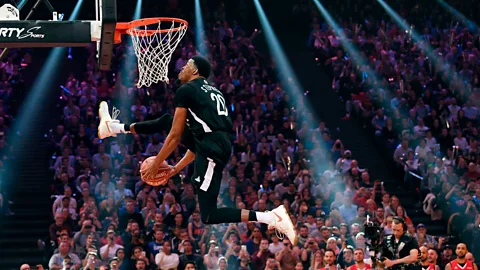
Most participants’ accuracy dropped sharply after the poor feedback. But this was not true for the people who had previously undergone quiet eye training: they managed to set the negative thoughts to one side and maintain a high level of performance.
Even more intriguingly, the Exeter researchers have found that the quiet eye duration correlates with self-reported feelings of ‘flow’ or ‘being in the zone’ – the sensation of effortless concentration, in which your mind is clear of everything except the task at hand. The quiet eye also seems to coincide to other physiological changes throughout the body. The heart rate temporarily decelerates, for instance, and the movement of the limbs themselves become smoother. All of this might seem to support the idea that the quiet eye filters distraction and calms the mind and the body at the critical moment, even under stress.
Vine cautions that we should be wary of assigning too much importance to the quiet eye; many other factors will contribute to sporting genius. But it would certainly seem to be a key component of the extreme focus that athletes such as Williams often describe. And these psychological factors are worth emphasising – particularly given that many commentators still focus on physical strength without acknowledging the incredible mental resilience of athletes such as Williams.
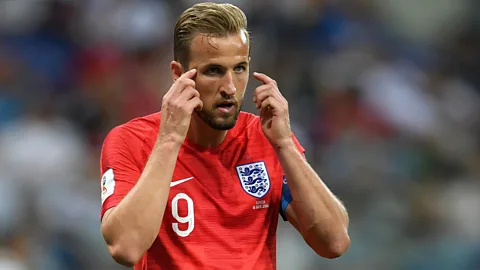 Getty Images
Getty ImagesWilliams herself is under no illusions about what is most important.
“I’ve won most of my matches – probably all of my grand slams – because of what’s upstairs, not anything else,” she told Sports Illustrated in 2015. A large part of that may be the kind of calm focus that comes from the quiet eye.
“If you are behind in a game, it’s so important to relax, and that’s what I do – when I’m behind in a game, that’s when I become most relaxed,” she added. “Just focus on one point at a time… just that sole point, and then the next one, and the next one.”
--
David Robson is a science writer based in London. He is d_a_robson on Twitter.
If you liked this story, sign up for the weekly bbc.com features newsletter, called “If You Only Read 6 Things This Week”. A handpicked selection of stories from BBC Future, Culture, Capital, and Travel, delivered to your inbox every Friday.
